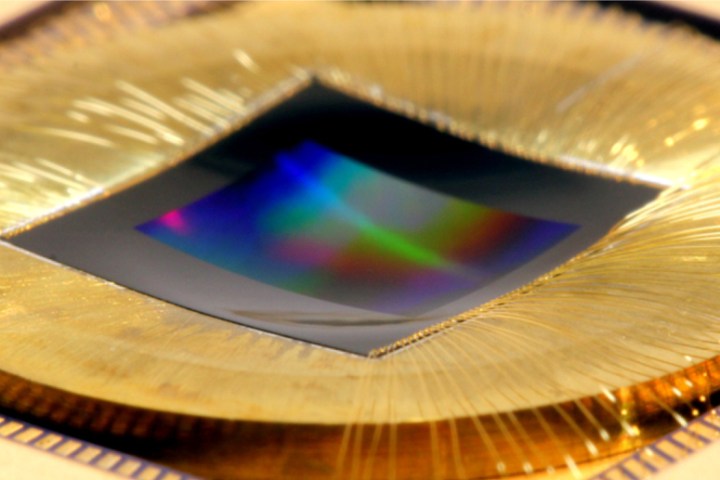
Earlier studies showed that using a curved sensor could reduce the weight of the camera and lens by 37 times, the researchers wrote, but in order to achieve a higher-quality image than current flat sensors, that curve had to match the field of view created by the lens. Creating a highly curved sensor, however, involved deforming the material into a curve, which stretches the pixels and doesn’t allow for a high resolution output — or breaks the sensor entirely.
The Microsoft team instead developed a silicon sensor with flexible die edges, allowing the sensor to curve more without the pixel stretch. By placing the sensor on custom molds and slowly stretching the sensor, the group’s attempts resulted in a larger curve without breaking the sensor during the bending process. The group tested the process on a number of different sensor sizes, including a camera with an f/1.2 lens that had twice the resolution of a traditional DSLR.
The research brings the idea of a curved sensor closer to reality by navigating through manufacturing pitfalls. The group says that the curved sensors are likely still a ways from mass production, but plans to continue the research already underway, including infrared variations.
The curved sensors could potentially be found inside future DSLRs, however, they require a completely different lens design, making it more likely that the tech will find its way inside cameras with fixed lenses first, such as in smartphone cameras.
Editors' Recommendations
- Samsung’s new 200-megapixel sensor may appear on S23 Ultra
- Microsoft Edge gets a big update with new themes, history and tab sync, and more
- Project xCloud tests draw closer as new apps surface on Microsoft Store




